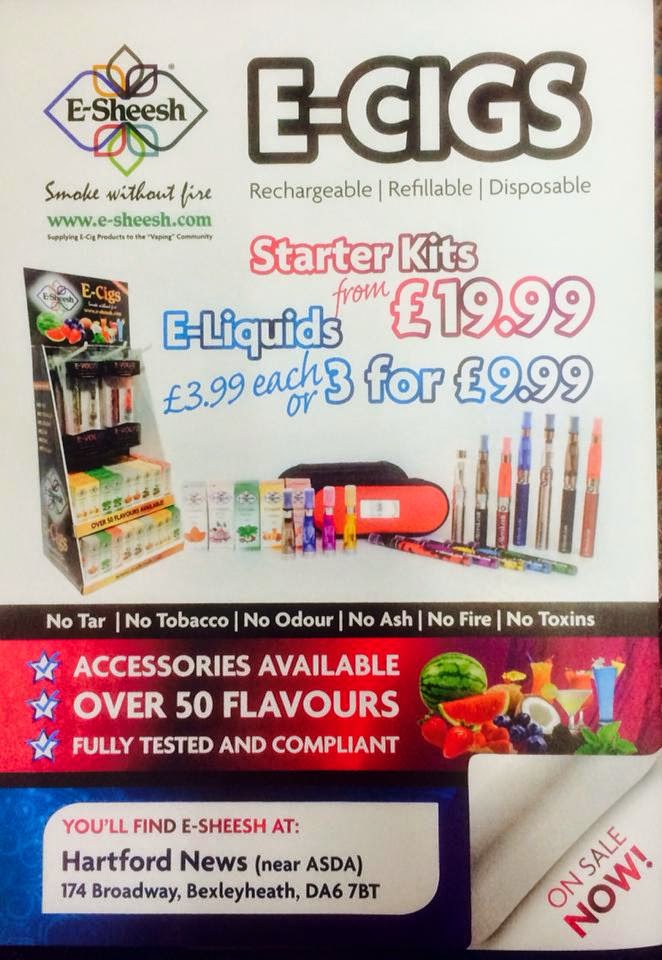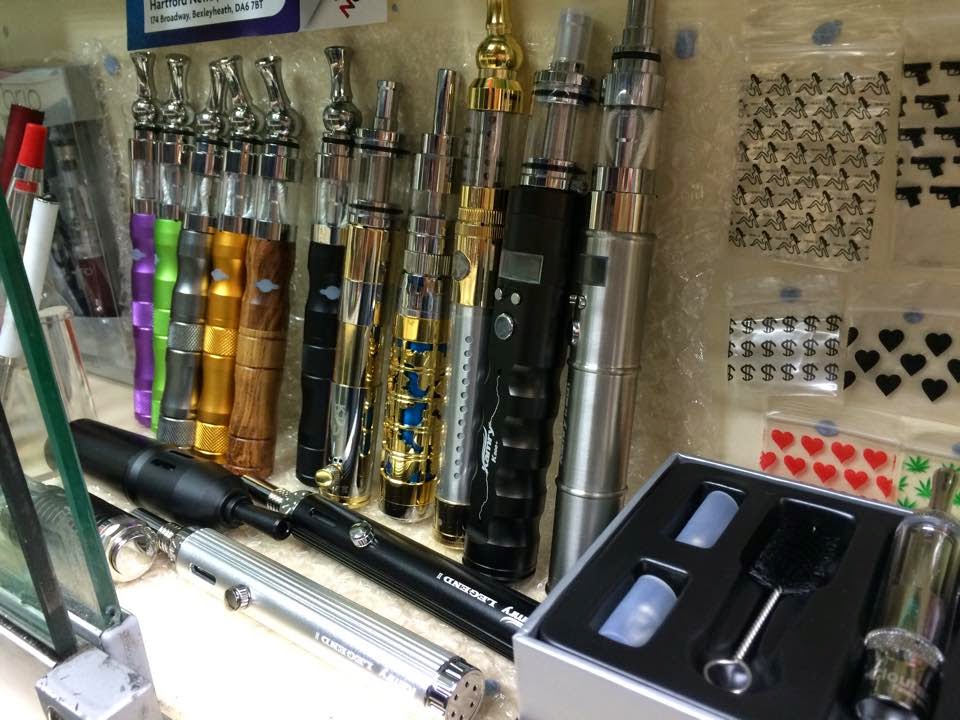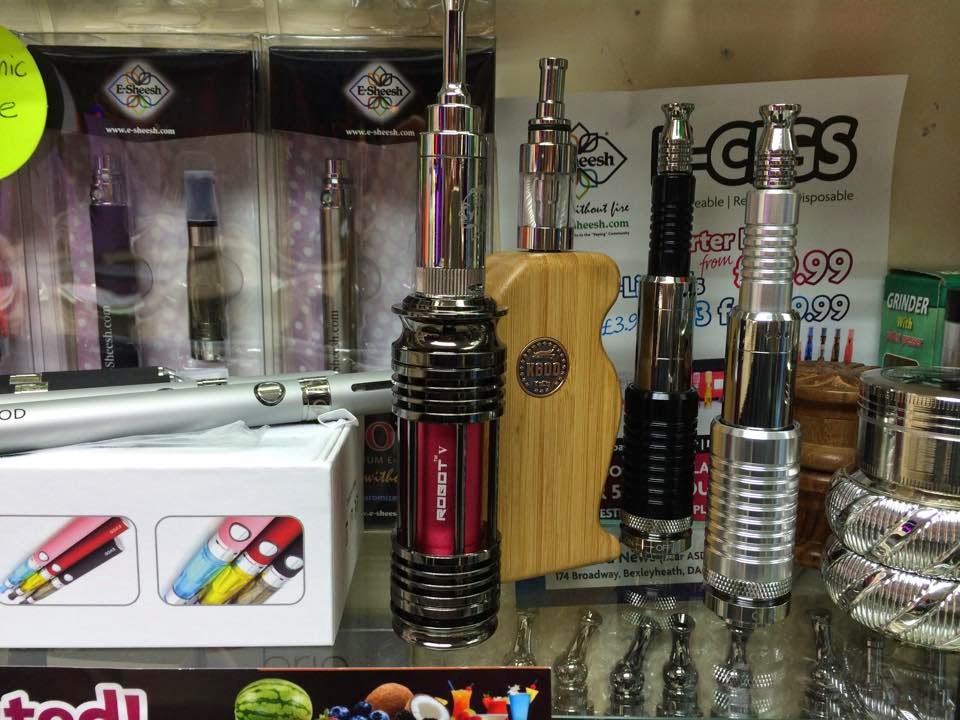
E-Liquids information: Propylene Glycol vs. Vegetable Glycerin
Newsagent, Bus Pass, Pay-Point, Confectionery, E-Cigs, E-Liquids, Tobacconist. (174 Broadway, Town Center, Bexleyheath, DA6 7BT).
Propylene Glycol vs.
Vegetable Glycerin
Due to its excellent stability and humectants qualities,
propylene glycol is used as a moisturizer in food, medicines, toothpaste and
cosmetics. In addition to its use as a carrier in E-liquid, PG is also added to
pipe tobacco to preserve moisture. Additionally, propylene glycol is used in
products with flavorings due to its ability to compound citrus or other
emulsified flavors often added to E-liquid.
According to Dow Chemical Company, manufacturer and
distributor of propylene glycols, because of its low oral toxicity, propylene
glycol is considered safe by the Food and Drug Administration (FDA) for use as
a direct food additive and for use as a carrier in pharmaceuticals. With a
shelf life of two years, stored below 104 degrees, propylene glycol should be
kept in a closed container out of direct contact with ultraviolet light.
Some controversy surrounds propylene glycol due to its
use in antifreeze. Consumers often come to an erroneous conclusion that if
propylene glycol is used in antifreeze it is unsafe in food and cosmetic
products. The typical ingredient found in antifreeze, ethylene glycol, is
highly toxic and is responsible for hundreds of animal deaths each year due to
accidental ingestion. Because of these concerns and potential risk to humans,
propylene glycol is sometimes used in place of ethylene glycol because its low
toxicity.
Ethylene glycol and propylene glycol. when added to
antifreeze, act as a carrier for the product to prevent the mixture from
freezing. Proponents for the use of propylene glycol in antifreeze include The
American Society for the Prevention of Cruelty to Animals. The fact that two
products have a common ingredient, doesn’t imply the products are identical. PG
is also used in moisturizers and toothpaste which can be toxic when ingested,
due to other non-food grade ingredients or toxic chemicals, such as fluoride in
toothpaste. More education about the safety of propylene glycol is needed to
allay fears of consumers.
Vegetable glycerin, or vegetable glycerol, is a
plant-based carbohydrate used as a base, moisturizer or carrier in common food
and health products such as cake mix, toothpaste, and gel capsules. When used
in E-liquid, vegetable glycerin produces vapor that mimics the appearance of
smoke as it is exhaled. Vegetable glycerin is sometimes preferred over
propylene glycol because of its increased vapor production. Vegetable glycerin
is thicker than propylene glycol, which may reduce the life of the e-cigarettes
atomizer when used at full strength. Combining propylene glycol and vegetable glycerin
in mixtures of at least 80 percent PG and 20 percent VG may eliminate extra
wear and tear on the atomizer without compromising the quality of vapor.
The safety of vegetable glycerin is virtually undisputed.
According to studies in the United States and Canada, VG is hypo-allergenic and
non-carcinogenic. VG has low potential to irritate eyes or other mucus
membranes and is not known to cause skin reactions. When skin irritation does
occur, it is usually due to skin coming into contact with high concentrations
of vegetable glycerin not used in E-liquid products. VG is metabolized easily
by the body and produces very low toxicity when inhaled or ingested.
One of the common side effects reported from use of VG in
E-liquid, is mild sore throat and dry mouth. Increasing water intake usually
alleviates side effects. Users have commented that mild side effects usually
subside on their own after a few days of use. This resolution is usually due to
the body’s ability to quickly adjust to vegetable glycerin in the body’s
system.
While vegetable glycerin is a carbohydrate derived from
plant oils, and propylene glycol is an organic compound produced in the
laboratory using organic and natural materials, both are considered safe for
ingesting or inhaling. Ultimately, whether to use a PG or VG-based E-liquid
comes down to individual user preference. Both bases provide an adequate and
enjoyable delivery system, without major differences in taste and vapor
production.

.png)



































































